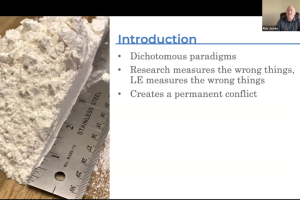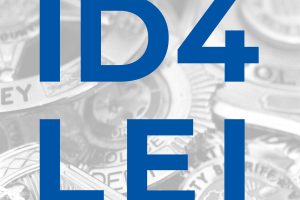I am a GenXer and I like it. We were known as the ones that challenged authority with such audacious questions like “why?” I remember as I entered the realm of training and education, the myriad articles about how GenX was shattering the conventions. I read articles about how these rabble rousers were thwarting all the good stuff in training by forcing such answers as “Because we have always done it this way.”
We challenged everything. We still do.
And it is a freakin good thing we did.
Training is better now, systems have improved, processes developed, technology ramped in ridiculous speeds, and disruption to industries is almost common place now. We didn’t just ask Why to be jerks, we were asking because we were – are – genuinely curious and want to understand, evaluate, analyze, and develop the world around us. We want to have reasons for why we do things or believe certain ways. Well, like any generation, most of us do and there are always exceptions.
How training has evolved and how it should be developed became clear to me while I was developing a presentation for a law enforcement association of academy directors. The subject was about training being developed using observation, analysis, and research, instead of based on one person’s experience – something that occurs all too frequently in every industry and business, but is especially problematic in law enforcement.
As I was developing this presentation, I considered generational changes in training and what millennials ask. I like that millennials are unsatisfied with their world and question everything as I did and do, but they still take it further. I realized there was an opportunity to develop clarity of what a training should provide, regardless of the generation, audience, or industry.
The epiphany came – There should be three Why questions:
- Why?
- Why this?
- Why this, this way?
My definition of training has been: “Education is the theory; training is the practical application of the theory.” While I like this thought, I was then forced to consider “what does that look like in function?”. Every training gives a background of what that theory is. I realized that this is the Why? The Why? provides the theory, consideration, intuition, experience, and assumptions about what is being trained.
As a GenXer, I always wanted to know Why? but didn’t know enough about how to take it further. How do I develop past the Why? and what do I do with the results? Well, the answer is you research it. You analyze through observation, research, or experimentation. The results answer the Why this? Why this? is the proof of the theory; how the practical application of the theory led to these facts.
Then, what do you do with the results that you have obtained? Results provide two types of information – what went right and what went wrong. These, in the instructional systems design world, will be “best practices” for what went right and “gap analysis” for what went wrong. Both are equally important when considering how to do a particular function as they provide the best way to do something and how to mitigate the gaps. We now have the Why this, this way?
Why this, this way? is the training material; where the rubber hits the road. It is where we take the theory, combine the evidence, and present the best practices through training materials and activities. This provides the background, experience, and expected outcomes we would use to measure success. Why this, this way? is building the behaviors we want to measure as performance. From here, we also more accurately measure instructor efficacy, learner performance, and training relevance because it gives us objective data and materials as a baseline.
All three of these Whys are necessary for developing training that keeps the learner engaged. Training cannot be “because we have always done it this way” or “because I said so and I have done it this way.” Our training should always be based on observation, analysis, and experimentation. I think the large disconnect we have with a lot of training being churned out is that it doesn’t answer these questions.
Constructing your training around Why? Why this? and Why this, this way? will help develop the buy-in necessary for effective training and establish sound instructional design best practices. Asking these three questions will also provide structure and foundation to the training, as well as logical progression of where information should go and develop the foundation that employees need to really grasp the concepts that follow.






Leave a Reply
Your email is safe with us.
You must be logged in to post a comment.